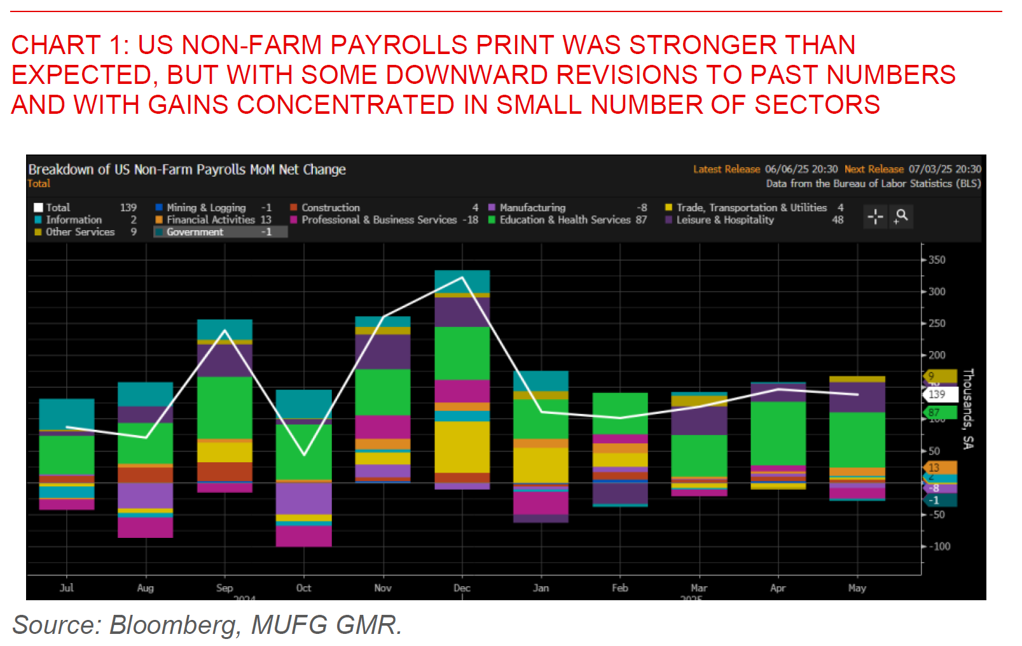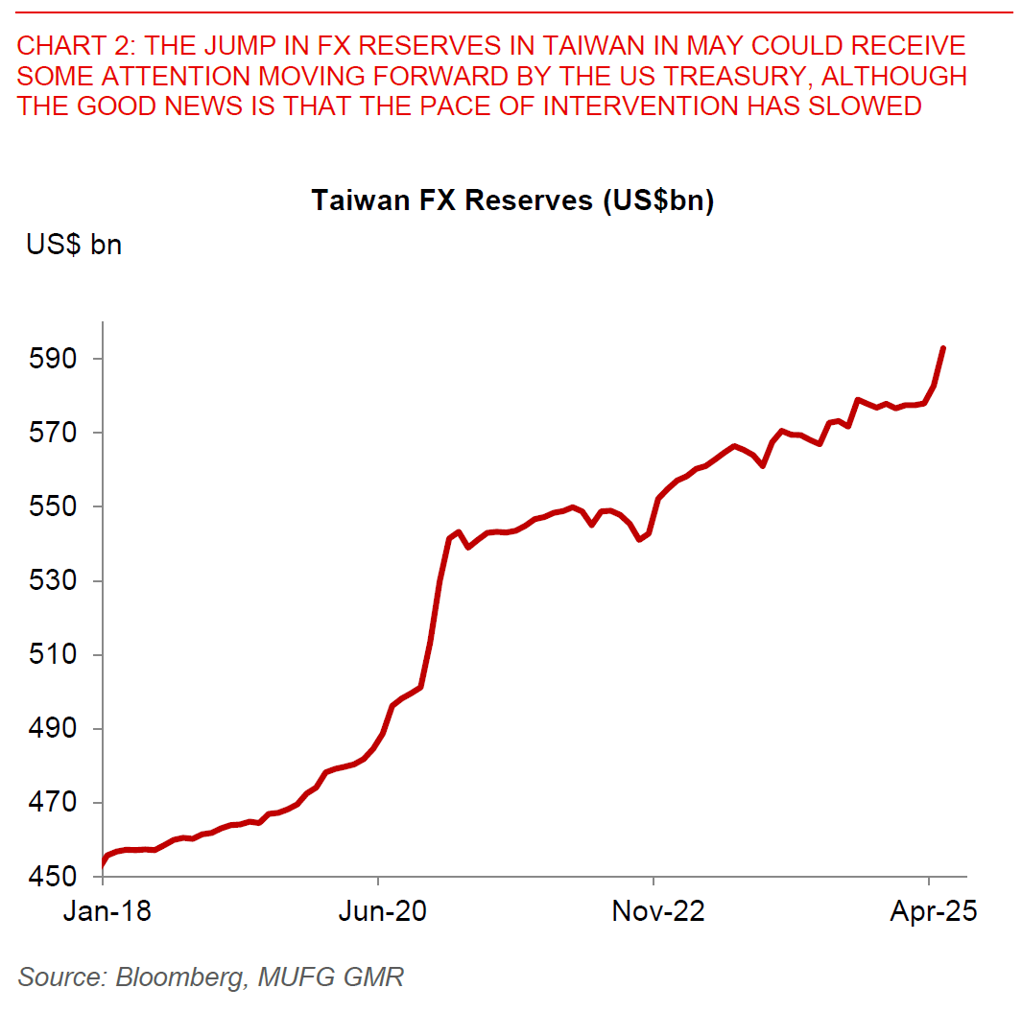Ahead Today
G3: US-China trade talks
Asia: China CPI, China PPI, China Exports and Trade Surplus
Market Highlights
The US Dollar strengthened over the weekend and Asia currencies generally softened, as US non-farm payrolls came in stronger than expected at 135k in May, and allaying some initial fears of a much sharper slowdown in the US labour market given alternative measures such as the ADP prints. That said, the details continue to point to a moderation in the US labour market, with quite a meaningful downward revision in past NFP estimates, and the vast bulk of the employment gains were narrow concentrated in leisure and hospitality coupled with education and health services.
The key to watch for today include the US-China trade talks, which are expected to focus on rare earth exports on the China side, coupled with various controls and restrictions including on semiconductors on the US side. Over the weekend, Reuters reported that China has issued temporary rare earth licenses to suppliers of top 3 US automakers, providing some signs of de-escalation ahead of trade talks. Meanwhile, the FT reported that China has agreed to fast-track approvals for rare earth export licenses for some European companies, and the overall picture seems to be one where China is still working through its system of export controls on rare earths perhaps due in part to bureaucratic inertia, even as China will very much keep its rare earth export licensing process in place given the meaningful leverage that it gives in future conflicts.

Regional FX
Asian FX were generally weaker, with KRW (-0.4%), THB (-0.4%), MYR (-0.4%) and SGD (-0.2%) underperforming, while USD/CNH rose to 7.186 levels. The US Treasury released its semi-annual report on Foreign Exchange Policies. No major trading partner was labelled as a currency manipulator, but among the markets we cover China, Korea, Taiwan, Singapore, and Vietnam were included in the monitoring list, having met at least 2 out of 3 of the criteria that the US Treasury has set out on this front. Post the report, Taiwan’s central bank put out a statement saying that the US Treasury continues to suggest Taiwan’s central bank limit its FX intervention, allowing FX moves to reflect economic fundamentals, while suggesting it pay close attention to non-bank financial sector risks, and reiterating that the US did not ask for a stronger TWD. On that note, the latest FX reserves data from Taiwan showing a meaningful US$10bn rise in FX reserves in May could draw further attention from the US Treasury moving forward if this pace continues, although the good news is that the FX intervention mostly took place before May 20 with supply and demand of US dollar more balanced over the past 2 weeks according to the CBC. Meanwhile, South Korea’s finance ministry says it will continue to closely discuss foreign exchange policy with the US to promote mutual understanding, following the release of the Treasury’s currency report.

